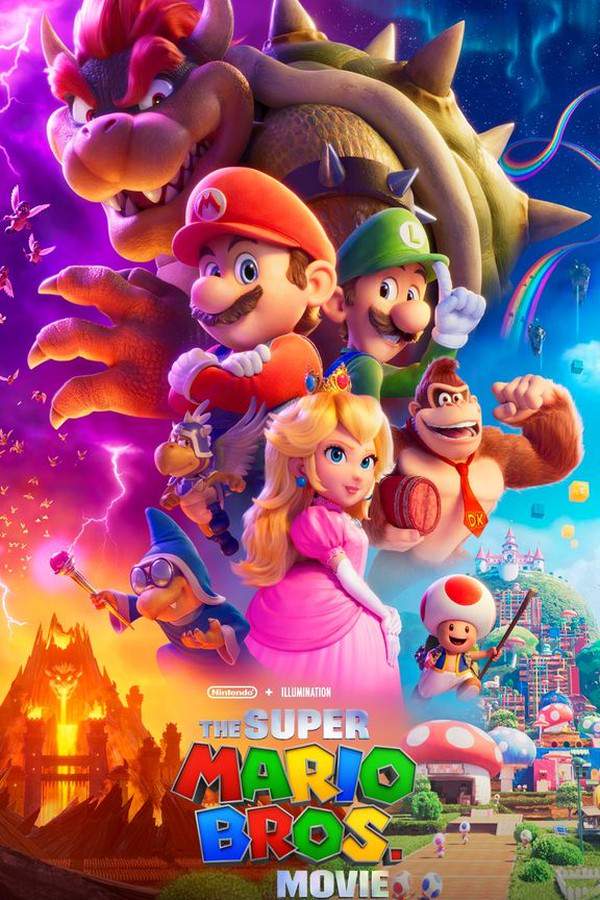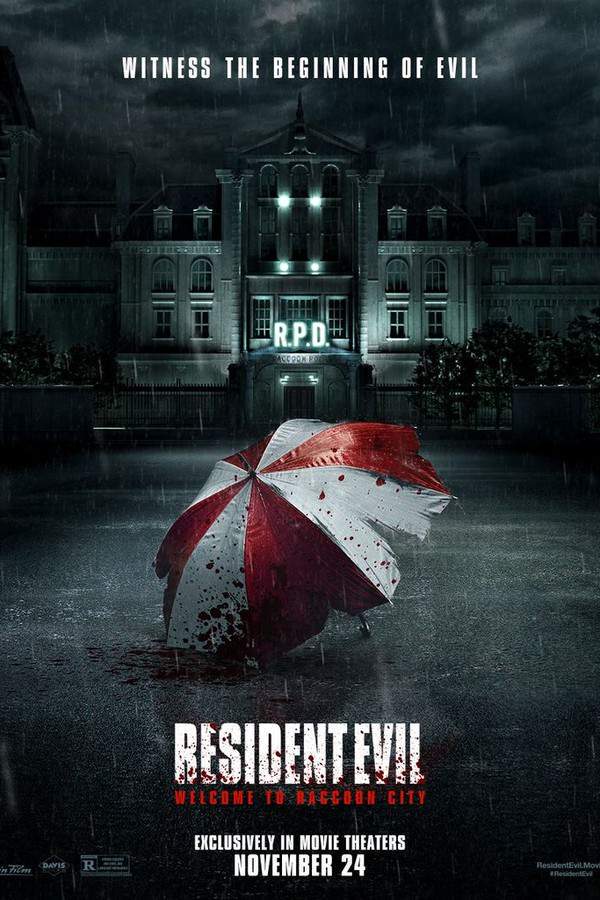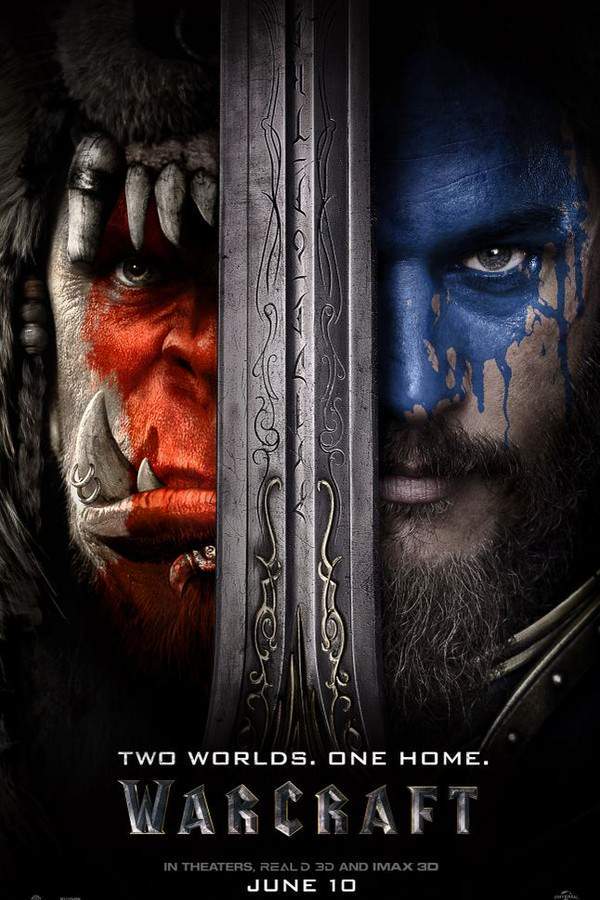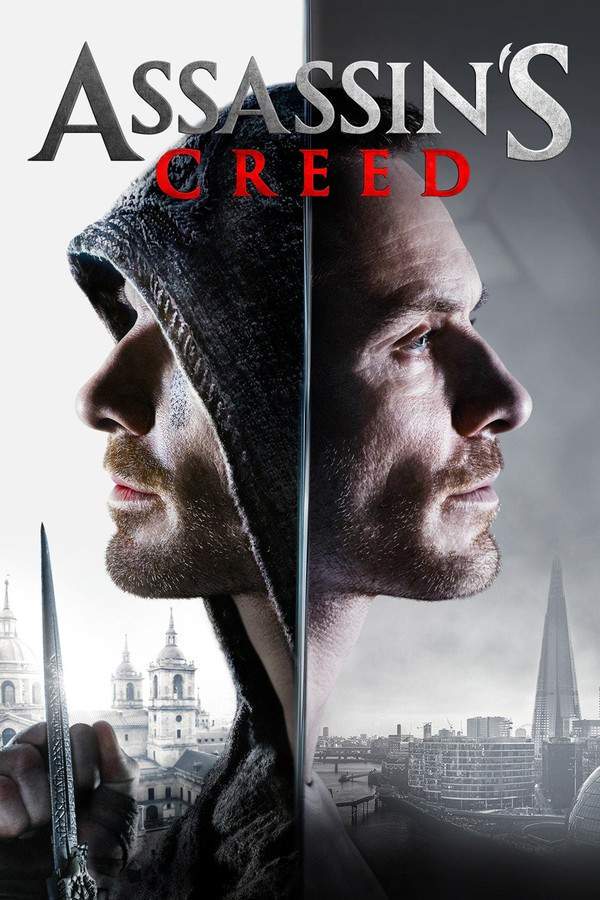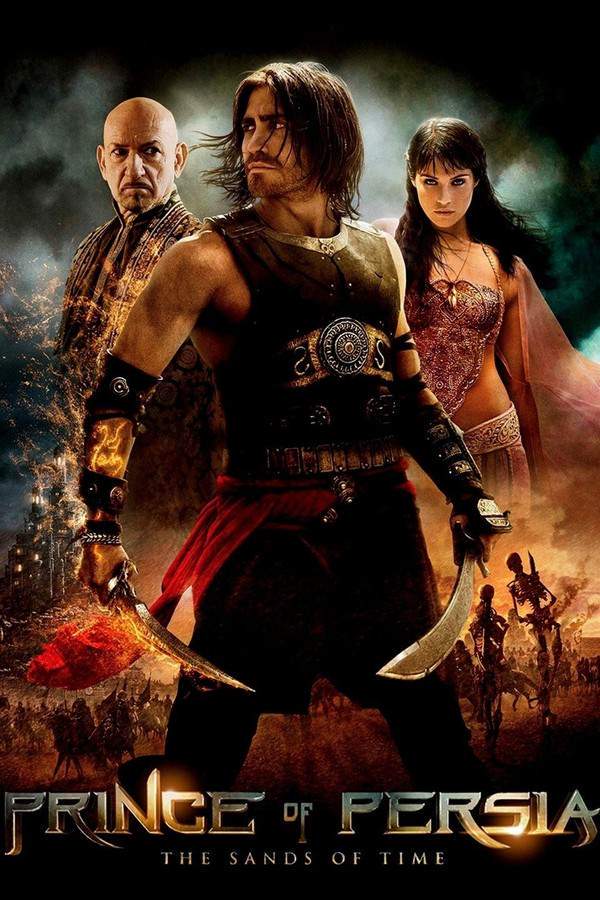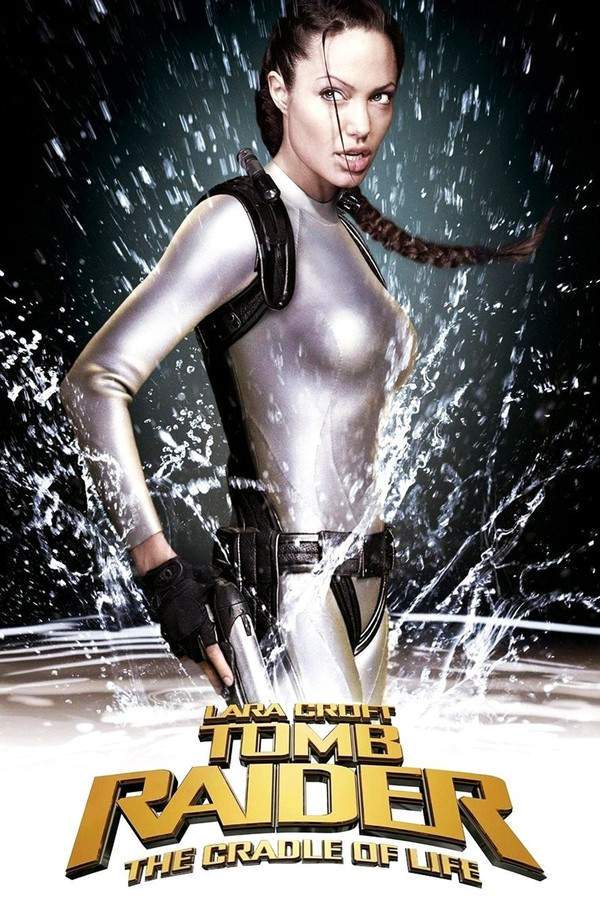What's After the Blog?
Remakes • Genres
The Journey of Adaptations: From Video Games to Movies
Dive into the dynamic world of video game to movie adaptations, exploring their evolution, challenges, and the future of this exciting genre.
September 8, 2024

Movies mentioned in this article
The Journey of Adaptations: From Video Games to Movies
Introduction
The adaptation of video games into movies is a fascinating journey that has evolved significantly over the years. This unique form of storytelling transition has intrigued filmmakers and audiences alike, presenting both incredible opportunities and daunting challenges. The history of video game adaptations is a mixed bag of successes and failures, where some have become iconic, while others have been forgotten. From the early days of pixelated graphics and simple gameplay to today’s complex narratives and advanced graphics, video games have grown to become a significant part of modern culture. This growth has naturally led to the interest in bringing these virtual adventures to life on the big screen. Films like Super Mario Bros. and Resident Evil have paved the way, each in their own time, setting the stage for how video game stories could be transformed into cinematic experiences.
The process of adapting a video game into a movie is riddled with unique challenges, primarily due to the inherent differences in the mediums. Video games offer interactive experiences where the player controls the narrative’s flow and outcome, whereas movies are a passive form of storytelling. This fundamental difference poses a significant challenge for filmmakers: how to transform an interactive experience into a narrative that’s engaging and faithful to the source material. Despite these challenges, there have been notable successes where video games have been brought to life on the big screen, capturing the essence of the game while telling a compelling story.
The Early Days of Video Game Adaptations
The journey of adapting video games into movies began in the early 1990s. One of the first major adaptations was Super Mario Bros. in 1993, based on Nintendo’s hugely popular game series. This film is often remembered for its bold attempt, albeit a commercial and critical failure, to translate a beloved game into a movie. The challenges faced by Super Mario Bros. highlighted the difficulties in adapting the interactive nature of video games to the passive format of films. The movie struggled to capture the game’s whimsical and adventurous spirit, resulting in a disjointed narrative that left both gamers and moviegoers dissatisfied.
Despite the initial setbacks, the film industry continued to experiment with video game adaptations. The release of Mortal Kombat in 1995 marked a turning point. It was one of the first adaptations to achieve commercial success, bringing the game’s high-energy combat and fantastical elements to the big screen with relative faithfulness to its source material. This success was followed by the Resident Evil series, which began in 2002. The films deviated from the games’ narratives but captured their horror and action elements, proving that with the right approach, video game adaptations could indeed be successful.
These early attempts laid the groundwork for future adaptations. They demonstrated that while it’s challenging to translate a game’s essence into a film, it’s not impossible. Success required a careful balance of staying true to the source material while crafting a movie that could stand on its own. As the video game industry continued to grow, so did the potential for more sophisticated and compelling adaptations. The lessons learned from these early endeavors would prove invaluable for the next generation of filmmakers looking to bring video games to life on the silver screen.
What Challenges Do Filmmakers Face When Adapting a Video Game into a Movie?
Adapting a video game into a movie presents a unique set of challenges, chiefly the task of translating an interactive experience into a linear storytelling format. Video games are inherently player-driven, with gameplay and player choice being central to the experience. This interactivity is what sets them apart from movies, which are a more passive form of entertainment. The key challenge for filmmakers is to capture the essence of the game - its world, characters, and the spirit of the gameplay - while crafting a narrative that appeals to both gamers and non-gamers alike.
One significant challenge is the depth of storytelling. Many modern video games offer expansive narratives, richly developed characters, and complex worlds, much more than can be adequately covered in a two-hour movie. This issue was evident in adaptations like Warcraft, where the vast lore of the game could not be fully explored within the film’s limited runtime. Another challenge is the portrayal of the game’s protagonist, often a character that players have spent hours embodying and customizing. Films like Assassin’s Creed struggled with this, as they had to choose a specific representation of the game’s lead character, potentially alienating players who had a different vision of their gaming experience.
Moreover, there’s the need to balance fan expectations with the broader appeal. Fans of the video game are often looking for a faithful recreation of their beloved game, while the general audience needs a coherent and engaging story that stands on its own. This balancing act is difficult to achieve, as seen in the mixed responses to movies like Prince of Persia: The Sands of Time and Silent Hill. These movies, while visually faithful to their respective games, received criticism for their narrative and character developments, highlighting the difficulty in creating a film that satisfies all viewers.
Iconic Video Game Adaptations
Despite the challenges, there have been several successful video game movie adaptations, each achieving acclaim in its own right and proving that with the right approach, it is possible to bridge the gap between these two mediums. A notable success is the Resident Evil series, which, while taking liberties with the source material, successfully captured the games’ horror atmosphere and became a successful franchise in its own right. These films, led by Milla Jovovich, resonated with audiences through their action-packed sequences and gripping storyline, albeit different from the games.
Another significant adaptation is Tomb Raider, which saw two different cinematic interpretations. The early 2000s movies, starring Angelina Jolie, were a hit among audiences, capturing the adventurous spirit of the game. More recently, the 2018 reboot, closer in tone and style to the game’s 2013 version, received praise for its realism and faithfulness to the game’s newer iterations. Detective Pikachu stands out as an example of how to creatively adapt a video game into a movie. Instead of directly adapting the Pokémon games, it chose to explore a unique story within the Pokémon universe, appealing to both long-time fans and newcomers. Its blend of humor, heart, and impressive CGI Pokémon characters showed how video game adaptations could succeed by expanding on the source material in creative ways.
Why Are Some Video Game Movies More Successful Than Others?
The success of a video game movie adaptation often hinges on how well it balances fidelity to the source material with the needs of cinematic storytelling. Successful adaptations tend to:
- Respect the game’s world and characters while crafting a compelling narrative that stands independently.
- Find the right tone that matches the spirit of the game, whether it’s the intense action of Resident Evil or the whimsical adventure of Detective Pikachu.
- Pay attention to visual details and game aesthetics, which is crucial for immersing viewers in the film’s world.
In conclusion, while not every video game adaptation has been successful, the ones that have, demonstrate a careful consideration of what makes the game appealing while telling a story that resonates with a broader audience. These adaptations are not just about bringing a game’s narrative to the big screen; they are about capturing the essence of the gaming experience in a cinematic form.
The Evolution of Visual Effects in Video Game Adaptations
The advancement of visual effects (VFX) has played a pivotal role in translating the fantastical worlds of video games into cinematic realities. Early adaptations often struggled with limited technology, resulting in less-than-stellar visual representations of beloved game worlds. However, as VFX technology has evolved, so has the ability of filmmakers to create more authentic and visually stunning adaptations. This evolution is crucial in video game movies, where the extraordinary environments and characters are often central to the game’s appeal.
Take, for instance, the Warcraft movie. Despite mixed reviews on its narrative aspects, the film was praised for its groundbreaking visual effects, which brought the rich and diverse world of Azeroth to life with remarkable detail and fidelity. The orcs in the film, brought to life through motion capture and sophisticated CGI, were particularly noteworthy for their realistic and expressive portrayal. Similarly, Assassin’s Creed showcased impressive VFX in recreating the game’s iconic leap of faith and the historical landscapes where the movie is set.
Bringing Game Characters to Life
One of the most significant challenges in adapting video games is the accurate portrayal of characters that players have spent hours with, understanding and empathizing with. Recent advancements in CGI and motion capture technology have made it possible to create more lifelike and faithful renditions of these characters. Detective Pikachu, for example, successfully brought Pokémon to life in a live-action setting, balancing realism with the fantastical elements that define these creatures in the games. The titular character, Pikachu, was particularly well-received for his realistic fur texture and expressive facial animations, which were crucial in creating an emotional connection with the audience.
Audience Reception and Critique
The success of a video game movie adaptation is not solely determined by box office numbers but also by how well it resonates with both the gaming community and general audiences. Gamers often have strong attachments to their favorite games, and their reception of a film adaptation can significantly influence its overall acceptance. Movies that have been able to satisfy both gamers and moviegoers generally receive better reviews and achieve a more enduring legacy.
For instance, the Resident Evil series, while deviating from the game’s storyline, was able to capture the essence of the game’s horror and action, leading to a generally positive reception among fans. In contrast, films like Hitman and Max Payne, which failed to capture the spirit of their respective games, were met with criticism from both gamers and critics alike.
Critical Reception and Its Impact
The critical reception of video game adaptations also plays a significant role in shaping public perception and the future of the genre. Critics tend to evaluate these films not just on how well they adapt the source material, but also on their merits as standalone movies. This dual perspective can often lead to harsher critiques, as seen with many adaptations that struggled to balance game fidelity with cinematic storytelling. However, when a video game movie receives positive reviews, as was the case with Detective Pikachu, it helps in legitimizing video game adaptations as a viable and respectable film genre.
In conclusion, the audience and critical reception of video game movies are complex and multifaceted. The most successful adaptations are those that can strike a chord with both gamers and moviegoers, respecting the source material while providing an engaging cinematic experience.
The Future of Video Game Adaptations
As we look forward, the future of video game adaptations appears bright and full of potential. The film industry’s growing recognition of video games as a rich source of storytelling, coupled with advancements in technology, sets the stage for more sophisticated and faithful adaptations. Upcoming projects and rumors of adaptations have already sparked excitement among fans, indicating a strong and sustained interest in this genre.
The potential for future adaptations is vast, considering the depth and variety of stories present in modern video games. Titles like The Last of Us, already in development as a TV series, and Uncharted, with its rich narrative and cinematic gameplay, are prime candidates for successful adaptations. These games offer compelling narratives, well-developed characters, and immersive worlds, which are key ingredients for a successful transition to the big screen.
Potential Game-Changing Adaptations
As technology continues to evolve, particularly in the realms of virtual reality and augmented reality, the possibilities for more immersive and interactive adaptations grow. The line between gaming and cinema could blur further, offering audiences experiences that combine the best aspects of both worlds. For example, the integration of VR in cinema could lead to adaptations where the audience is more actively engaged in the narrative, mirroring the interactivity of video games.
Conclusion
The journey of adapting video games into movies is one marked by both challenges and triumphs. It is a journey of learning, adapting, and evolving. While not all adaptations have been successful, the ones that have, provide a roadmap for future endeavors in this genre. These successes show that when the unique qualities of video games are respected and combined with the storytelling strengths of cinema, the result can be a captivating and enriching experience.
The evolution of visual effects and the increasing sophistication of storytelling in video games present exciting opportunities for future adaptations. As the lines between video games and movies continue to blur, the potential for groundbreaking and successful adaptations is limitless. For fans of both mediums, this presents an exciting future, full of possibilities for experiencing their favorite video game worlds in new and engaging ways.
Stay tuned to What’s After the Movie for more insights into the fascinating world of movies, including the latest on video game adaptations, movie descriptions, and those all-important end credit scenes. Join us as we continue to explore the evolving landscape of cinema and its intersection with the dynamic world of video games.
Join the Conversation
We have traversed the intriguing path of video game adaptations into movies, witnessing their evolution, challenges, and triumphs. Now, it’s your turn to share your thoughts. What are your views on these adaptations? Are there any particular video game movies that resonated with you, or perhaps some that you felt didn’t do justice to the original game? How do you envision the future of this genre?
Your insights and opinions are a vital part of this discussion. At What’s After the Movie, we value the perspectives and experiences of our readers, who bring diverse viewpoints to our community. Whether you’re a hardcore gamer, a movie buff, or someone who enjoys both, your contribution enriches our understanding and appreciation of this unique genre.
- Share Your Favorite Adaptations: Let us know which video game movies you loved and why.
- Voice Your Concerns: If there were adaptations you didn’t like, tell us what aspects you think could have been improved.
- Discuss Future Possibilities: Share your thoughts on which video games you’d like to see adapted into movies and how you imagine they could be brought to life.
Engaging with your thoughts helps us all gain a deeper appreciation of the art of adaptation and the complexities involved in bringing video game worlds to the cinematic screen.
Discover More at What’s After the Movie
Thank you for joining us on this exploration of video game adaptations into movies. We hope this journey has been as enlightening and engaging for you as it has been for us. If you’re intrigued by the world of movies, adaptations, and the stories behind them, we invite you to delve deeper.
At What’s After the Movie, we’re passionate about all aspects of cinema. From deep dives into specific genres to explorations of filmmaking techniques, our platform offers a wealth of information and insights for movie enthusiasts. Here’s what you can look forward to:
- In-depth Movie Analysis: Explore our comprehensive movie database for detailed insights into your favorite films.
- Behind-The-Scenes Peeks: Learn about the filmmaking process and what goes into adapting stories from one medium to another.
- End Credit Scenes Decoded: Discover the hidden gems and surprises waiting in post-credit scenes.
Your journey into the world of movies and adaptations doesn’t end here. Continue exploring, discovering, and enjoying the rich tapestry of cinema with us at What’s After the Movie, where every film has a story and every story has its nuances.
Continue reading

What's After the Movie?
Not sure whether to stay after the credits? Find out!
Explore Our Movie Platform
New Movie Releases (2025)
Famous Movie Actors
Top Film Production Studios
Movie Plot Summaries & Endings
Major Movie Awards & Winners
Best Concert Films & Music Documentaries
Movie Collections and Curated Lists
© 2025 What's After the Movie. All rights reserved.

